Ultrahigh-Sensitivity Detection of 17β-Estradiol
Abstract
:1. Introduction
2. Nanoplatforms for Ultrahigh-Sensitivity E2 Sensors
3. Luminescence-Based Sensors
4. Electrochemical Sensors
5. SERS-Based Sensors
6. Miscellaneous
7. Conclusions and Outlook
Author Contributions
Funding
Conflicts of Interest
References
- Rosner, W.; Hankinson, S.E.; Sluss, P.M.; Vesper, H.W.; Wierman, M.E. Challenges to the Measurement of Estradiol: An Endocrine Society Position Statement. J. Clin. Endocr. Metab. 2013, 98, 1376–1387. [Google Scholar] [CrossRef]
- Pu, H.B.; Huang, Z.B.; Sun, D.W.; Fu, H.H. Recent advances in the detection of 17β-estradiol in food matrices: A review. Crit. Rev. Food Sci. 2019, 59, 2144–2157. [Google Scholar] [CrossRef] [PubMed]
- Waifalkar, P.P.; Noh, D.; Derashri, P.; Barage, S.; Oh, E. Role of Estradiol Hormone in Human Life and Electrochemical Aptasensing of 17β-Estradiol: A Review. Biosensors 2022, 12, 1117. [Google Scholar] [CrossRef] [PubMed]
- Seeger, H.; Armbruster, F.P.; Mueck, A.O.; Lippert, T.H. The effect of estradiol on urodilatin production in postmenopausal women. Arch. Gynecol. Obstet. 1998, 262, 65–68. [Google Scholar] [CrossRef]
- Gleixner, A.; Meyer, H.H.D. Detection of estradiol and testosterone in hair of cattle by HPLC/EIA. Fresen J. Anal. Chem. 1997, 357, 1198–1201. [Google Scholar] [CrossRef]
- Geisler, J.; Berntsen, H.; Lonning, P.E. A novel HPLC-RIA method for the simultaneous detection of estrone, estradiol and estrone sulphate levels in breast cancer tissue. J. Steroid Biochem. 2000, 72, 259–264. [Google Scholar] [CrossRef]
- Yasui, T.; Uemura, H.; Umino, Y.; Takikawa, M.; Kuwahara, A.; Saito, S.; Matsuzaki, T.; Maegawa, M.; Furumoto, H.; Miura, M.; et al. Serum estradiol concentration as measured by HPLC-RIA and bone mineral density in postmenopausal women during hormone replacement therapy. Horm. Res. 2004, 61, 117–125. [Google Scholar] [CrossRef] [PubMed]
- Szarka, S.; Nguyen, V.; Prokai, L.; Prokai-Tatrai, K. Separation of dansylated 17β-estradiol, 17α-estradiol, and estrone on a single HPLC column for simultaneous quantitation by LC-MS/MS. Anal. Bioanal. Chem. 2013, 405, 3399–3406. [Google Scholar] [CrossRef]
- Yakupova, Z.R.; Lebedinets, S.A.; Vakh, K.S.; Garmonov, S.Y.; Bulatov, A.V. Microextraction of 17-β-Estradiol from Medicinal Preparations for the Subsequent Determination by HPLC-UV. J. Anal. Chem. 2022, 77, 342–346. [Google Scholar] [CrossRef]
- Laboratories, M.C. Estradiol, Serum. Available online: https://pediatric.testcatalog.org/show/EEST (accessed on 29 December 2023).
- Wheeler, M.D.; Styne, D.M. Diagnosis and management of precocious puberty. Pediatr. Clin. N. Am. 1990, 37, 1255–1271. [Google Scholar] [CrossRef]
- Jenner, M.R.; Kelch, R.P.; Kaplan, S.L.; Grumbach, M.M. Hormonal changes in puberty. IV. Plasma estradiol, LH, and FSH in prepubertal children, pubertal females, and in precocious puberty, premature thelarche, hypogonadism, and in a child with a feminizing ovarian tumor. J. Clin. Endocrinol. Metab. 1972, 34, 521–530. [Google Scholar] [CrossRef] [PubMed]
- Aksglaede, L.; Juul, A.; Leffers, H.; Skakkebaek, N.E.; Andersson, A.M. The sensitivity of the child to sex steroids: Possible impact of exogenous estrogens. Hum. Reprod. Update 2006, 12, 341–349. [Google Scholar] [CrossRef] [PubMed]
- Lee, P.A. Advances in the management of precocious puberty. Clin. Pediatr. 1994, 33, 54–61. [Google Scholar] [CrossRef]
- Endocrinolgy, T.K.S.o.P. The Korean Society of Pediatric Endocrinolgy’s Clinical Guidelines; The Korean Society of Pediatric Endocrinolgy: Seoul, Republic of Korea, 2011. [Google Scholar]
- D’Alessandro, P.R.; Hamilton, J.; Khatchadourian, K.; Lunaczek-Motyka, E.; Schultz, K.R.; Metzger, D.; Deyell, R.J. Precocious puberty: A red flag for malignancy in childhood. Br. Columbia Med. J. 2021, 63, 242–246. [Google Scholar]
- Coburn, S.B.; Stanczyk, F.Z.; Falk, R.T.; McGlynn, K.A.; Brinton, L.A.; Sampson, J.; Bradwin, G.; Xu, X.; Trabert, B. Comparability of serum, plasma, and urinary estrogen and estrogen metabolite measurements by sex and menopausal status. Cancer Causes Control 2019, 30, 75–86. [Google Scholar] [CrossRef] [PubMed]
- Newman, M.; Pratt, S.M.; Curran, D.A.; Stanczyk, F.Z. Evaluating urinary estrogen and progesterone metabolites using dried filter paper samples and gas chromatography with tandem mass spectrometry (GC-MS/MS). BMC Chem. 2019, 13, 20. [Google Scholar] [CrossRef] [PubMed]
- Pattnaik, S.; Das, D.; Venkatesan, V.A.; Rai, A. Predicting serum hormone concentration by estimation of urinary hormones through a home-use device. Hum. Reprod. Open 2022, 2023, hoac058. [Google Scholar] [CrossRef] [PubMed]
- Chotboon, C.; Salang, L.; Buppasiri, P.; Amnatbuddee, S.; Eamudomkarn, N. Association between urine and serum estradiol levels in in vitro fertilization cycles. Sci. Rep. 2022, 12, 4393. [Google Scholar] [CrossRef] [PubMed]
- Gulamhusein, N.; Miranda, K.T.; Ahmed, S.B.; Leung, A.A.; Tang, K.L.; Adekanye, J.; Butalia, S. Measurements of Postmenopausal Serum Estradiol Levels and Cardiovascular Events: A Systematic Review. CJC Open 2023, 6, 347–354. [Google Scholar] [CrossRef]
- Penning, T.M.; Lee, S.H.; Jin, Y.; Gutierrez, A.; Blair, I.A. Liquid chromatography-mass spectrometry (LC-MS) of steroid hormone metabolites and its applications. J. Steroid Biochem. 2010, 121, 546–555. [Google Scholar] [CrossRef]
- Liu, J.; Bai, W.; Niu, S.; Zhu, C.; Yang, S.; Chen, A. Highly sensitive colorimetric detection of 17beta-estradiol using split DNA aptamers immobilized on unmodified gold nanoparticles. Sci. Rep. 2014, 4, 7571. [Google Scholar] [CrossRef]
- Mbomson, I.; McMeekin, S.; Lahiri, B.; De La Rue, R.; Johnson, N. Gold asymmetric split ring resonators (A-SRRs) for nano sensing of estradiol. In Proceedings of the SPIE Photonics Europe, Brussels, Belgium, 14–17 April 2014. [Google Scholar]
- Alsager, O.A.; Kumar, S.; Zhu, B.C.; Travas-Sejdic, J.; McNatty, K.P.; Hodgkiss, J.M. Ultrasensitive Colorimetric Detection of 17β-Estradiol: The Effect of Shortening DNA Aptamer Sequences. Anal. Chem. 2015, 87, 4201–4209. [Google Scholar] [CrossRef] [PubMed]
- Arcadio, F.; Seggio, M.; Zeni, L.; Bossi, A.M.; Cennamo, N. Estradiol Detection for Aquaculture Exploiting Plasmonic Spoon-Shaped Biosensors. Biosensors 2023, 13, 432. [Google Scholar] [CrossRef]
- Jin, H.Y.; Cheng, Y.; Kong, F.L.; Huang, H.; Yang, Z.J.; Wang, X.Y.; Cai, X.X.; Luo, J.P.; Ming, T. Design and Validation of a Short Novel Estradiol Aptamer and Exploration of Its Application in Sensor Technology. Molecules 2024, 29, 535. [Google Scholar] [CrossRef]
- Li, Y.; Su, R.; Xu, J.; Bie, J.; Sun, R.; Wang, L.; Liu, X.; Sun, C. Aptamers-Based Sensing Strategy for 17beta-Estradiol Through Fluorescence Resonance Energy Transfer Between Oppositely Charged CdTe Quantum Dots and Gold Nanoparticles. J. Nanosci. Nanotechnol. 2018, 18, 1517–1527. [Google Scholar] [CrossRef] [PubMed]
- Du, L.Y.; Ji, W.; Zhang, Y.F.; Zhang, C.Y.; Liu, G.F.; Wang, S.H. An ultrasensitive detection of 17β-estradiol using a gold nanoparticle-based fluorescence immunoassay. Analyst 2015, 140, 2001–2007. [Google Scholar] [CrossRef]
- Dong, X.; Zhao, G.H.; Li, Y.Y.; Zeng, Q.Z.; Ma, H.M.; Wu, D.; Ren, X.; Wei, Q.; Ju, H.X. Dual-Mechanism Quenching of Electrochemiluminescence Immunosensor Based on a Novel ECL Emitter Polyoxomolybdate-Zirconia for 17β-Estradiol Detection. Anal. Chem. 2022, 94, 12742–12749. [Google Scholar] [CrossRef] [PubMed]
- Zhang, Y.J.; Jia, L.C.; Wang, W.; Jiang, M.; Zhang, H.Y.; Niu, L.M. A novel fluorescent sensor based on aptamer recognition and DNA walker amplification strategy and its determination of 17β-estradiol. Arab. J. Chem. 2023, 16, 105340. [Google Scholar] [CrossRef]
- Qi, X.; Hu, H.; Yang, Y.; Piao, Y. Graphite nanoparticle as nanoquencher for 17beta-estradiol detection using shortened aptamer sequence. Analyst 2018, 143, 4163–4170. [Google Scholar] [CrossRef]
- Brognara, A.; Mohamad Ali Nasri, I.F.; Bricchi, B.R.; Li Bassi, A.; Gauchotte-Lindsay, C.; Ghidelli, M.; Lidgi-Guigui, N. Highly sensitive detection of estradiol by a SERS sensor based on TiO(2) covered with gold nanoparticles. Beilstein J. Nanotechnol. 2020, 11, 1026–1035. [Google Scholar] [CrossRef]
- Wang, Z.; Wang, J.J.; Lai, Y.; Wei, Z.; Li, J. Rapid detection of estrogen compounds using surface-enhanced Raman spectroscopy with a Zn/Au-Ag/Ag sandwich-structured substrate. Opt. Mater. 2021, 112, 110759. [Google Scholar] [CrossRef]
- Wang, R.; Chon, H.; Lee, S.; Cheng, Z.Y.; Hong, S.H.; Yoon, Y.H.; Choo, J. Highly Sensitive Detection of Hormone Estradiol E2 Using Surface-Enhanced Raman Scattering Based Immunoassays for the Clinical Diagnosis of Precocious Puberty. ACS Appl. Mater. Interfaces 2016, 8, 10665–10672. [Google Scholar] [CrossRef] [PubMed]
- Wang, X.Y.; Song, M.X.; Wang, Y.H.; Deng, W.; Li, D. Peak-differentiation-imitating-assisted SERS strategy for the accurate detection of estrogens at the femtomole level. Chem. Commun. 2022, 58, 13887–13890. [Google Scholar] [CrossRef]
- Zhang, M.M.; Wu, Z.Y.; Yang, Y.H.; Ye, J.; Han, S.; Li, Y.T. Fabrication of molecularly-imprinted gold nanoparticle-embedded Fe-MOFs for highly selective SERS detection of 17β-estradiol in milk. Analyst 2023, 148, 2472–2481. [Google Scholar] [CrossRef] [PubMed]
- Li, C.N.; He, X.; Li, H.; Xiao, Y.; Xu, X.A.; Jiang, C.A.; Wen, G.Q.; Jiang, Z.L. A new COF@AuNC catalytic amplification-aptamer SERS quantitative analysis method for trace estradiol with nanoreaction of HAuCl4-sulfite. Microchem. J. 2023, 191, 108920. [Google Scholar] [CrossRef]
- Wang, S.; Li, Y.; Ding, M.; Wu, X.; Xu, J.; Wang, R.; Wen, T.; Huang, W.; Zhou, P.; Ma, K.; et al. Self-assembly molecularly imprinted polymers of 17beta-estradiol on the surface of magnetic nanoparticles for selective separation and detection of estrogenic hormones in feeds. J. Chromatogr. B Analyt Technol. Biomed. Life Sci. 2011, 879, 2595–2600. [Google Scholar] [CrossRef] [PubMed]
- Özcan, A.; Topçuoğulları, D.; Atılır Özcan, A. Voltammetric Determination of Estradiol in Milk and Pharmaceuticals Based on Fumed-Silica Modified Carbon Paste Electrode. Anadolu Univ. J. Sci. Technol.-A Appl. Sci. Eng. 2018, 19, 963–975. [Google Scholar] [CrossRef]
- Masikini, M.; Ghica, M.E.; Baker, P.G.L.; Iwuoha, E.I.; Brett, C.M.A. Electrochemical Sensor Based on Multi-walled Carbon Nanotube/Gold Nanoparticle Modified Glassy Carbon Electrode for Detection of Estradiol in Environmental Samples. Electroanalysis 2019, 31, 1925–1933. [Google Scholar] [CrossRef]
- Spychalska, K.; Zajac, D.; Cabaj, J. Electrochemical biosensor for detection of 17beta-estradiol using semi-conducting polymer and horseradish peroxidase. RSC Adv. 2020, 10, 9079–9087. [Google Scholar] [CrossRef]
- Spychalska, K.; Baluta, S.; Świst, A.; Cabaj, J. Biosensors for β17-estradiol detection based on graphene quantum dots (GQDs)/conducting polymer and laccase modified platinum/gold electrodes. Int. J. Electrochem. Sci. 2020, 15, 3127–3142. [Google Scholar] [CrossRef]
- Guo, M.; Cui, X.; Wang, L.; Yang, K.; Xu, J.; Yu, L.; Luo, Z.; Zeng, A.; Zhang, J.; Fu, Q. Electrochemical Sensor Based on Poly-L-Tyrosine/AuNCs/PDA-CNTs Nanocomposites for the Detection of 17β-Estradiol in Wastewater. J. Electrochem. Soc. 2022, 169, 107506. [Google Scholar] [CrossRef]
- Zhang, T.; Du, X.; Zhang, Z. Advances in electrochemical sensors based on nanomaterials for the detection of lipid hormone. Front. Bioeng. Biotechnol. 2022, 10, 993015. [Google Scholar] [CrossRef]
- Zhang, X.Y.; Peng, Y.; Bai, J.L.; Ning, B.A.; Sun, S.M.; Hong, X.D.; Liu, Y.Y.; Liu, Y.; Gao, Z.X. A novel electrochemical sensor based on electropolymerized molecularly imprinted polymer and gold nanomaterials amplification for estradiol detection. Sens. Actuators B-Chem. 2014, 200, 69–75. [Google Scholar] [CrossRef]
- Florea, A.; Cristea, C.; Vocanson, F.; Sandulescu, R.; Jaffrezic-Renault, N. Electrochemical sensor for the detection of estradiol based on electropolymerized molecularly imprinted polythioaniline film with signal amplification using gold nanoparticles. Electrochem. Commun. 2015, 59, 36–39. [Google Scholar] [CrossRef]
- Dai, Y.F.; Liu, C.C. Detection of 17 β-Estradiol in Environmental Samples and for Health Care Using a Single-Use, Cost-Effective Biosensor Based on Differential Pulse Voltammetry (DPV). Biosensors 2017, 7, 15. [Google Scholar] [CrossRef]
- Kim, Y.S.; Jung, H.S.; Matsuura, T.; Lee, H.Y.; Kawai, T.; Gu, M.B. Electrochemical detection of 17β-estradiol using DNA aptamer immobilized gold electrode chip. Biosens. Bioelectron. 2007, 22, 2525–2531. [Google Scholar] [CrossRef]
- Domènech, A.; Pich, S.; Arís, A.; Plasencia, C.; Bach, A.; Serrano, A. Heat identification by 17β-estradiol and progesterone quantification in individual raw milk samples by enzyme immunoassay. Electron. J. Biotechnol. 2011, 14, 10. [Google Scholar]
- Chiu, M.L.; Tseng, T.T.; Monbouquette, H.G. A convenient homogeneous enzyme immunoassay for estradiol detection. Biotechnol. Appl. Biochem. 2011, 58, 75–82. [Google Scholar] [CrossRef]
- Huang, Y.; Zhang, L.; Li, Z.Z.; Gopinath, S.C.B.; Chen, Y.; Xiao, Y. Aptamer-17β-estradiol-antibody sandwich ELISA for determination of gynecological endocrine function. Biotechnol. Appl. Biochem. 2021, 68, 881–888. [Google Scholar] [CrossRef]
- Akki, S.U.; Werth, C.J.; Silverman, S.K. Selective Aptamers for Detection of Estradiol and Ethynylestradiol in Natural Waters. Environ. Sci. Technol. 2015, 49, 9905–9913. [Google Scholar] [CrossRef]
- Harnsoongnoen, S.; Loutchanwoot, P.; Srivilai, P. Sensing High 17β-Estradiol Concentrations Using a Planar Microwave Sensor Integrated with a Microfluidic Channel. Biosensors 2023, 13, 541. [Google Scholar] [CrossRef]
- Tu, L.H.; Zhu, J.H.; Tanjung, A.P.; Wang, M.; Kang, J.; Wang, A.J.; Mei, L.P.; Xue, Y.; Song, P. A signal-off photoelectrochemical aptasensor for ultrasensitive 17beta-estradiol detection based on rose-like CdS@C nanostructure and enzymatic amplification. Mikrochim. Acta 2022, 189, 56. [Google Scholar] [CrossRef]
- Lee, H.; Kim, K.H.; Lee, K.H. Non-invasive molecular barcode assay for diagnosis of sex hormones correlated with precocious puberty. Sens. Actuators B-Chem. 2019, 282, 399–407. [Google Scholar] [CrossRef]
- de Cezaro, A.M.; Rigo, A.A.; Martinazzo, J.; Muenchen, D.K.; Manzoli, A.; Correa, D.S.; Steffens, J.; Steffens, C. Cantilever Nanobiosensor Functionalized with Tyrosinase for Detection of Estrone and β-estradiol in Water. Appl. Biochem. Biotech. 2020, 190, 1512–1524. [Google Scholar] [CrossRef]
- Hao, X.F.; Guan, Y.; Liu, F.; Zhang, Y.J.; Zhai, Y.J.; Niu, L.M. Ultrasensitive detection and application of estradiol based on nucleic acid aptamer and circulating amplification technology. J. Electroanal. Chem. 2022, 913, 116284. [Google Scholar] [CrossRef]
- Ahn, J.S.; Jang, C.H. Sensitive detection of 17β-estradiol at a picomolar level using an aptamer-assisted liquid crystal-based optical sensor. Anal. Bioanal. Chem. 2023, 415, 6323–6332. [Google Scholar] [CrossRef]
- Yaqoob, S.B.; Adnan, R.; Khan, R.M.R.; Rashid, M. Gold, Silver, and Palladium Nanoparticles: A Chemical Tool for Biomedical Applications. Front. Chem. 2020, 8, 376. [Google Scholar] [CrossRef]
- Kang, H.; Buchman, J.T.; Rodriguez, R.S.; Ring, H.L.; He, J.Y.; Bantz, K.C.; Haynes, C.L. Stabilization of Silver and Gold Nanoparticles: Preservation and Improvement of Plasmonic Functionalities. Chem. Rev. 2019, 119, 664–699. [Google Scholar] [CrossRef]
- Liao, C.Z.; Li, Y.C.; Tjong, S.C. Bactericidal and Cytotoxic Properties of Silver Nanoparticles. Int. J. Mol. Sci. 2019, 20, 449. [Google Scholar] [CrossRef]
- Krishnaveni, V.; DMello, M.E.; Sahoo, P.; Thokala, N.; Bakuru, V.R.; Vankayala, K.; Basavaiah, K.; Kalidindi, S.B. Palladium-Nanoparticle-Decorated Covalent Organic Framework Nanosheets for Effective Hydrogen Gas Sensors. ACS Appl. Nano Mater. 2023, 6, 10960–10966. [Google Scholar] [CrossRef]
- Liu, P.S.; Wang, H.; Li, X.M.; Rui, M.C.; Zeng, H.B. Localized surface plasmon resonance of Cu nanoparticles by laser ablation liquid media. RSC Adv. 2015, 5, 79738–79745. [Google Scholar] [CrossRef]
- Jeyaraj, M.; Gurunathan, S.; Qasim, M.; Kang, M.H.; Kim, J.H. A Comprehensive Review on the Synthesis, Characterization, and Biomedical Application of Platinum Nanoparticles. Nanomaterials 2019, 9, 1719. [Google Scholar] [CrossRef]
- de la Rosa, S.Y.G.; Diaz, R.M.; Gutiérrez, P.T.V.; Patakfalvi, R.; Coronado, O.G. Functionalized Platinum Nanoparticles with Biomedical Applications. Int. J. Mol. Sci. 2022, 23, 9404. [Google Scholar] [CrossRef]
- Sadique, M.A.; Yadav, S.; Khare, V.; Khan, R.; Tripathi, G.K.; Khare, P.S. Functionalized Titanium Dioxide Nanoparticle-Based Electrochemical Immunosensor for Detection of SARS-CoV-2 Antibody. Diagnostics 2022, 12, 2612. [Google Scholar] [CrossRef]
- Wei, Q.Y.; Zhang, P.Y.; Pu, H.B.; Sun, D.W. A fluorescence aptasensor based on carbon quantum dots and magnetic Fe3O4 nanoparticles for highly sensitive detection of 17β-estradiol. Food Chem. 2022, 373, 131591. [Google Scholar] [CrossRef]
- Kaushal, S.; Nanda, S.S.; Yi, D.K.; Ju, H. Effects of Aspect Ratio Heterogeneity of an Assembly of Gold Nanorod on Localized Surface Plasmon Resonance. J. Phys. Chem. Lett. 2020, 11, 5972–5979. [Google Scholar] [CrossRef]
- Seok, J.S.; Ju, H. Plasmonic Optical Biosensors for Detecting C-Reactive Protein: A Review. Micromachines 2020, 11, 895. [Google Scholar] [CrossRef]
- Tran, N.H.T.; Phan, T.B.; Nguyen, T.T.; Ju, H. Coupling of silver nanoparticle-conjugated fluorescent dyes into optical fiber modes for enhanced signal-to-noise ratio. Biosens. Bioelectron. 2021, 176, 112900. [Google Scholar] [CrossRef]
- Tran, V.T.; Ju, H. Fluorescence Enhancement via Dual Coupling of Dye Molecules with Silver Nanostructures. Chemosensors 2021, 9, 217. [Google Scholar] [CrossRef]
- Phuong, N.T.T.; Dang, V.Q.; Hieu, L.V.; Bach, T.N.; Khuyen, B.X.; Ta, H.K.T.; Ju, H.; Phan, B.T.; Tran, N.H.T. Functionalized silver nanoparticles for SERS amplification with enhanced reproducibility and for ultrasensitive optical fiber sensing in environmental and biochemical assays. RSC Adv. 2022, 12, 31352–31362. [Google Scholar] [CrossRef]
- Phuong, N.T.T.; Phung, V.D.; Le, T.B.N.; Chi, T.; Hien, B.T.T.; Tho, L.H.; Mai, N.X.D.; Phan, T.B.; Tran, N.H.T.; Ju, H.K.Y. Ultrasensitive Monitoring of Cyanide Concentrations in Water Using a Au-Ag Hybrid-Coating-Based Fiber Optical Sensor. Langmuir 2023, 39, 15799–15807. [Google Scholar] [CrossRef] [PubMed]
- Rajamanikandan, R.; Ilanchelian, M.; Ju, H. β-cyclodextrin functionalized gold nanoparticles as an effective nanocatalyst for reducing toxic nitroaromatics. Opt. Mater. 2023, 135, 113294. [Google Scholar] [CrossRef]
- Rajamanikandan, R.; Shanmugaraj, K.; Ilanchelian, M.; Ju, H. Cysteamine-decorated gold nanoparticles for plasmon-based colorimetric on-site sensors for detecting cyanide ions using the smart-phone color ratio and for catalytic reduction of 4-nitrophenol. Chemosphere 2023, 316, 137836. [Google Scholar] [CrossRef]
- Rajamanikandan, R.; Sasikumar, K.; Kosame, S.; Ju, H.K.Y. Optical Sensing of Toxic Cyanide Anions Using Noble Metal Nanomaterials. Nanomaterials 2023, 13, 290. [Google Scholar] [CrossRef] [PubMed]
- Kim, J.; Son, C.; Choi, S.; Yoon, W.J.; Ju, H. A Plasmonic Fiber Based Glucometer and Its Temperature Dependence. Micromachines 2018, 9, 506. [Google Scholar] [CrossRef] [PubMed]
- Tran, V.T.; Yoon, W.J.; Lee, J.H.; Ju, H. DNA sequence-induced modulation of bimetallic surface plasmons in optical fibers for sub-ppq (parts-per-quadrillion) detection of mercury ions in water. J. Mater. Chem. A 2018, 6, 23894–23902. [Google Scholar] [CrossRef]
- Cao, X.D.; Ye, Y.K.; Liu, S.Q. Gold nanoparticle-based signal amplification for biosensing. Anal. Biochem. 2011, 417, 1–16. [Google Scholar] [CrossRef]
- Hong, X.; Hall, E.A.H. Contribution of gold nanoparticles to the signal amplification in surface plasmon resonance. Analyst 2012, 137, 4712–4719. [Google Scholar] [CrossRef]
- Huang, J.Y.; Lin, H.T.; Chen, T.H.; Chen, C.A.; Chang, H.T.; Chen, C.F. Signal Amplified Gold Nanoparticles for Cancer Diagnosis on Paper-Based Analytical Devices. ACS Sens. 2018, 3, 174–182. [Google Scholar] [CrossRef]
- Bezuneh, T.T.; Fereja, T.H.; Kitte, S.A.; Li, H.J.; Jin, Y.D. Gold nanoparticle-based signal amplified electrochemiluminescence for biosensing applications. Talanta 2022, 248, 123611. [Google Scholar] [CrossRef]
- Kadhim, R.J.; Karsh, E.H.; Taqi, Z.J.; Jabir, M.S. Biocompatibility of gold nanoparticles: In-vitro and In-vivo study. Mater. Today Proc. 2021, 42, 3041–3045. [Google Scholar] [CrossRef]
- Xu, J.; Sahu, S.; Cao, L.; Bunker, C.E.; Peng, G.; Liu, Y.M.; Fernando, K.A.S.; Wang, P.; Guliants, E.A.; Meziani, M.J.; et al. Efficient Fluorescence Quenching in Carbon Dots by Surface-Doped Metals–Disruption of Excited State Redox Processes and Mechanistic Implications. Langmuir 2012, 28, 16141–16147. [Google Scholar] [CrossRef] [PubMed]
- Kim, D.; Yokota, H.; Taniguchi, T.; Nakayama, M. Precise control of photoluminescence enhancement and quenching of semiconductor quantum dots using localized surface plasmons in metal nanoparticles. J. Appl. Phys. 2013, 114, 154307. [Google Scholar] [CrossRef]
- Samanta, A.; Zhou, Y.D.; Zou, S.L.; Yan, H.; Liu, Y. Fluorescence Quenching of Quantum Dots by Gold Nanoparticles: A Potential Long Range Spectroscopic Ruler. Nano Lett. 2014, 14, 5052–5057. [Google Scholar] [CrossRef] [PubMed]
- Pawar, S.; Duadi, H.; Fleger, Y.; Fixler, D. Design and Use of a Gold Nanoparticle-Carbon Dot Hybrid for a FLIM-Based IMPLICATION Nano Logic Gate. ACS Omega 2022, 7, 22818–22824. [Google Scholar] [CrossRef] [PubMed]
- Hildebrandt, N.; Lim, M.; Kim, N.; Choi, D.; Nam, J.M. Plasmonic quenching and enhancement: Metal-quantum dot nanohybrids for fluorescence biosensing. Chem. Commun. 2023, 59, 2352–2380. [Google Scholar] [CrossRef] [PubMed]
- Tran, V.T.; Ju, H. Fluorescence Based on Surface Plasmon Coupled Emission for Ultrahigh Sensitivity Immunoassay of Cardiac Troponin I. Biomedicines 2021, 9, 448. [Google Scholar] [CrossRef]
- Tran, V.T.; Seok, J.S.; Yoon, I.; Ju, H. Ultraviolet Fluorescence-Based Quantitative Detection of Polycyclic Aromatic Hydrocarbons. BioChip J. 2021, 15, 356–361. [Google Scholar] [CrossRef]
- Rajamanikandan, R.; Ilanchelian, M.; Ju, H. Highly Selective Uricase-Based Quantification of Uric Acid Using Hydrogen Peroxide Sensitive Poly-(vinylpyrrolidone) Templated Copper Nanoclusters as a Fluorescence Probe. Chemosensors 2023, 11, 268. [Google Scholar] [CrossRef]
- Sasikumar, K.; Rajamanikandan, R.; Ju, H. Fluorescent carbon dots for highly sensitive bilirubin sensing with excellent selectivity. J. Sci.-Adv. Mater. Dev. 2023, 8, 100599. [Google Scholar] [CrossRef]
- Sasikumar, K.; Rajamanikandan, R.; Ju, H. Nitrogen- and Sulfur-Codoped Strong Green Fluorescent Carbon Dots for the Highly Specific Quantification of Quercetin in Food Samples. Materials 2023, 16, 7686. [Google Scholar] [CrossRef]
- Galarreta, B.C.; Rupar, I.; Young, A.; Lagugné-Labarthet, F. Mapping Hot-Spots in Hexagonal Arrays of Metallic Nanotriangles with Azobenzene Polymer Thin Films. J. Phys. Chem. C 2011, 115, 15318–15323. [Google Scholar] [CrossRef]
- Pavaskar, P.; Theiss, J.; Cronin, S.B. Plasmonic hot spots: Nanogap enhancement vs. focusing effects from surrounding nanoparticles. Opt. Express 2012, 20, 14656–14662. [Google Scholar] [CrossRef] [PubMed]
- Wang, X.; Liu, C.X.; Gao, C.C.; Yao, K.L.; Masouleh, S.S.M.; Berte, R.; Ren, H.R.; Menezes, L.D.; Cortes, E.; Bicket, I.C.; et al. Self-Constructed Multiple Plasmonic Hotspots on an Individual Fractal to Amplify Broadband Hot Electron Generation. ACS Nano 2021, 15, 10553–10564. [Google Scholar] [CrossRef] [PubMed]
- Gabudean, A.M.; Biro, D.; Astilean, S. Localized surface plasmon resonance (LSPR) and surface-enhanced Raman scattering (SERS) studies of 4-aminothiophenol adsorption on gold nanorods. J. Mol. Struct. 2011, 993, 420–424. [Google Scholar] [CrossRef]
- Cialla, D.; März, A.; Böhme, R.; Theil, F.; Weber, K.; Schmitt, M.; Popp, J. Surface-enhanced Raman spectroscopy (SERS): Progress and trends. Anal. Bioanal. Chem. 2012, 403, 27–54. [Google Scholar] [CrossRef]
- Turino, M.; Pazos-Perez, N.; Guerrini, L.; Alvarez-Puebla, R.A. Positively-charged plasmonic nanostructures for SERS sensing applications. RSC Adv. 2021, 12, 845–859. [Google Scholar] [CrossRef] [PubMed]
- An, N.T.; Ta, H.K.T.; Van Hoang, D.; Phung, V.D.; Tran, N.H.T.; Phan, B.T. Multilayer Graphene Oxide-Silver Nanoparticles for Stable, Highly Sensitive, and Reusable SERS Platforms. Chemnanomat 2023, 9, e20220516. [Google Scholar]
- Yu, T.H.; Ho, C.H.; Wu, C.Y.; Chien, C.H.; Lin, C.H.; Lee, S. Metal-organic frameworks: A novel SERS substrate. J. Raman Spectrosc. 2013, 44, 1506–1511. [Google Scholar] [CrossRef]
- Tran, N.L.N.; Phan, B.T.; Ta, H.K.T.; Chi, T.T.K.; Hien, B.T.T.; Phuong, N.T.T.; Nguyen, C.C.; Doan, T.L.H.; Tran, N.H.T. Gold nanoparticles are capped under the IRMOF-3 platform for in-situ surface-enhanced Raman scattering technique and optic fiber sensor. Sens. Actuators A-Phys. 2022, 347, 113932. [Google Scholar] [CrossRef]
- Tran, N.L.N.; Nguyen, T.A.; Doan, T.L.H.; Nguyen, H.V.T.; Huong, V.T.; Tran, T.T.V.; Ju, H.; Huy, T.H.; Le, H.V.; Tran, N.H.T. Stacking-order Reversed Multilayers of ZIF-8 and Silver Nanoparticles for the SERS Detection of Organic Dye Species. Chemnanomat 2023, 9, e202300164. [Google Scholar] [CrossRef]
- Tran, N.L.; Van Hoang, D.; Pham, A.T.T.; Phuong, N.T.T.; Mai, N.X.D.; Chi, T.T.K.; Hien, B.T.T.; Phan, T.B.; Tran, N.H.T. Novel composites of nano-metal-organic frameworks (IRMOF-3) and silver nanoparticles for the ultra-sensitive performance of SERS sensing and optical fiber modes. J. Sci.-Adv. Mater. Dev. 2023, 8, 100584. [Google Scholar]
- Liu, Y.; Chen, Y.; Zhang, Y.Y.; Kou, Q.W.; Zhang, Y.J.; Wang, Y.X.; Chen, L.; Sun, Y.T.; Zhang, H.L.; Jung, Y.M. Detection and Identification of Estrogen Based on Surface-Enhanced Resonance Raman Scattering (SERRS). Molecules 2018, 23, 1330. [Google Scholar] [CrossRef] [PubMed]
- Liu, Z.G.; Yu, S.H.; Xu, S.P.; Zhao, B.; Xu, W.Q. Ultrasensitive Detection of Capsaicin in Oil for Fast Identification of Illegal Cooking Oil by SERRS. ACS Omega 2017, 2, 8401–8406. [Google Scholar] [CrossRef] [PubMed]
- Li, J.K.; Zuo, M.; Zhang, W.; Zou, X.B.; Sun, Z.B. Diazo Coupling-Based Ultrasensitive SERS Detection of Capsaicin and Its Application in Identifying Gutter Oil. Food Anal. Method. 2022, 15, 3468–3478. [Google Scholar] [CrossRef]
- Schecter, A.; Malik, N.; Haffner, D.; Smith, S.; Harris, T.R.; Paepke, O.; Birnbaum, L. Bisphenol A (BPA) in U.S. Food. Environ. Sci. Technol. 2010, 44, 9425–9430. [Google Scholar] [CrossRef] [PubMed]
- Pezzella, A.; Lista, L.; Napolitano, A.; d’Ischia, M. Tyrosinase-catalyzed oxidation of 17β-estradiol:: Structure elucidation of the products formed beyond catechol estrogen quinones. Chem. Res. Toxicol. 2005, 18, 1413–1419. [Google Scholar] [CrossRef] [PubMed]
- Nguyen, T.T.; Han, G.R.; Jang, C.H.; Ju, H. Optical birefringence of liquid crystals for label-free optical biosensing diagnosis. Int. J. Nanomed. 2015, 10, 25–32. [Google Scholar]
- Wang, H.N.; Xu, T.H.; Fu, Y.X.; Wang, Z.Y.H.; Leeson, M.S.; Jiang, J.F.; Liu, T.G. Liquid Crystal Biosensors: Principles, Structure and Applications. Biosensors 2022, 12, 639. [Google Scholar] [CrossRef]
- Li, B.; Ju, H. Label-free optical biosensors based on a planar optical waveguide. BioChip J. 2013, 7, 295–318. [Google Scholar] [CrossRef]
- Tran, N.H.T.; Kim, J.; Phan, T.B.; Khym, S.; Ju, H. Label-Free Optical Biochemical Sensors via Liquid-Cladding-Induced Modulation of Waveguide Modes. ACS Appl. Mater. Inter. 2017, 9, 31478–31487. [Google Scholar] [CrossRef] [PubMed]
- Tran, V.T.; Tran, N.H.T.; Nguyen, T.T.; Yoon, W.J.; Ju, H. Liquid Cladding Mediated Optical Fiber Sensors for Copper Ion Detection. Micromachines 2018, 9, 471. [Google Scholar] [CrossRef] [PubMed]
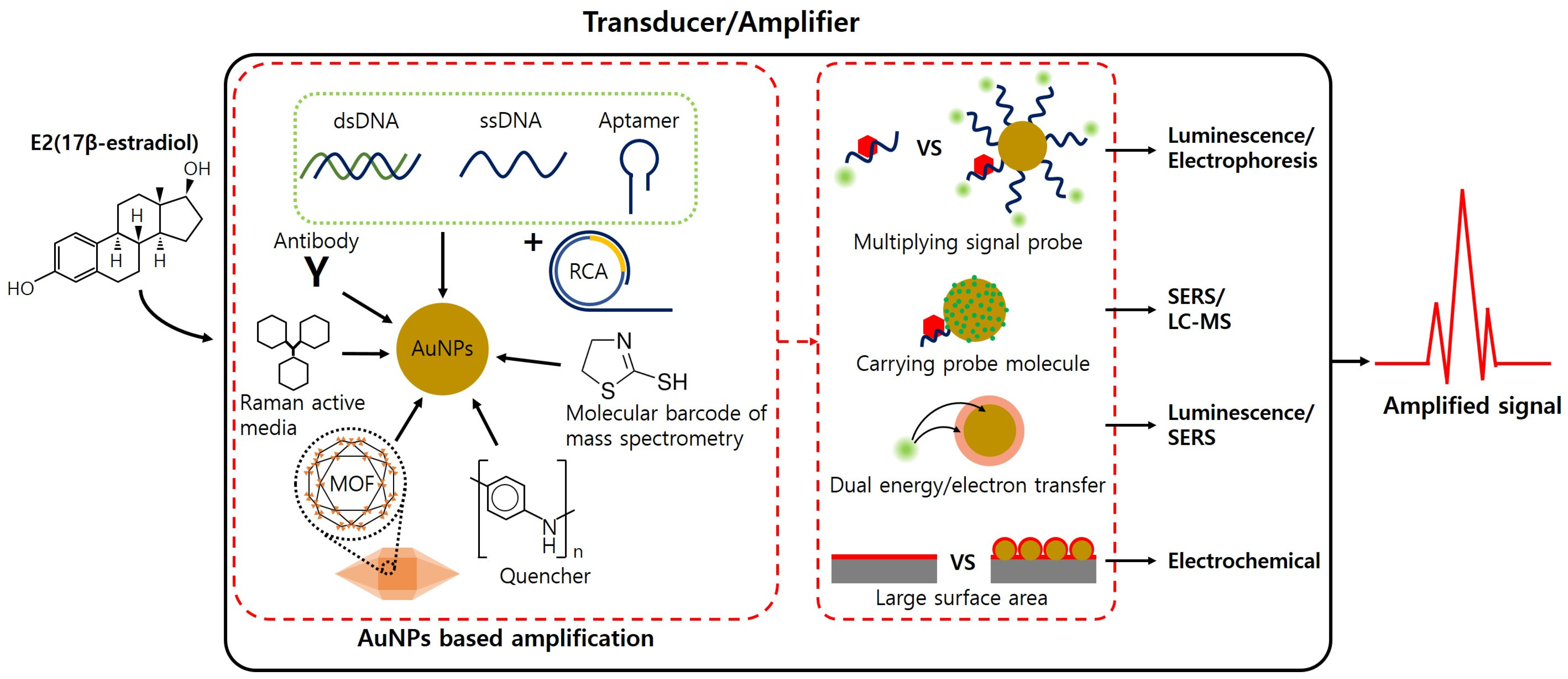
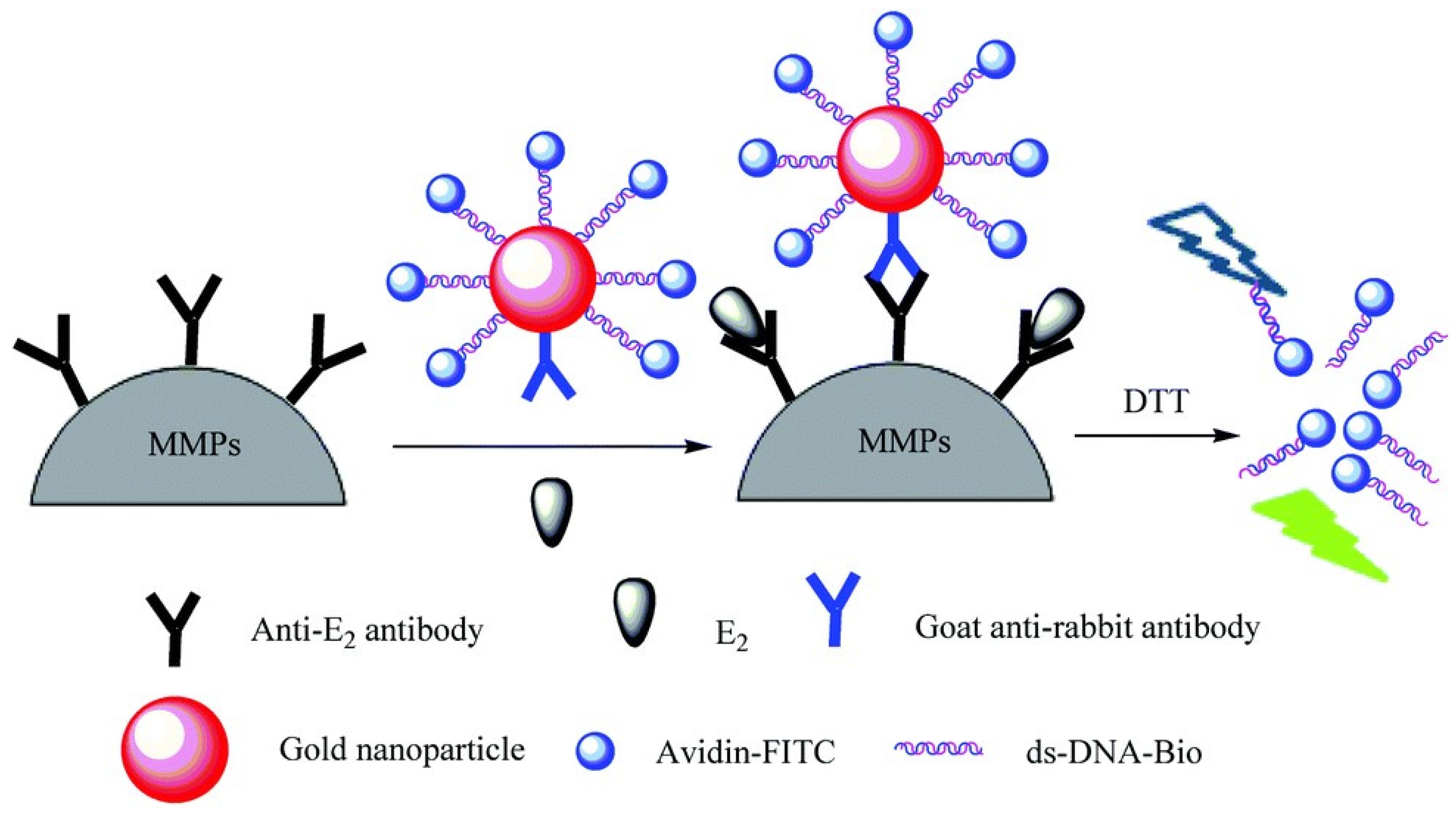
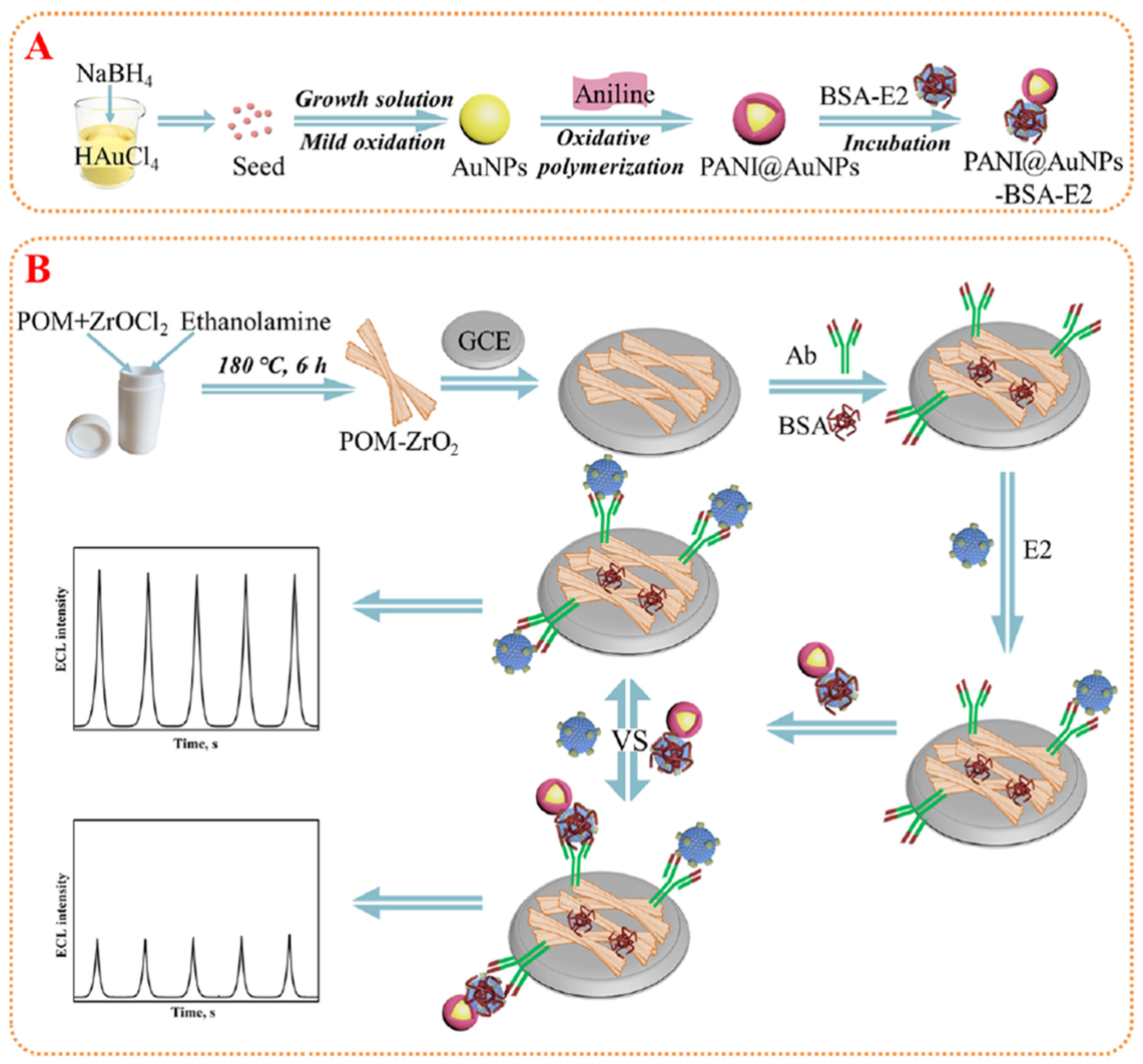

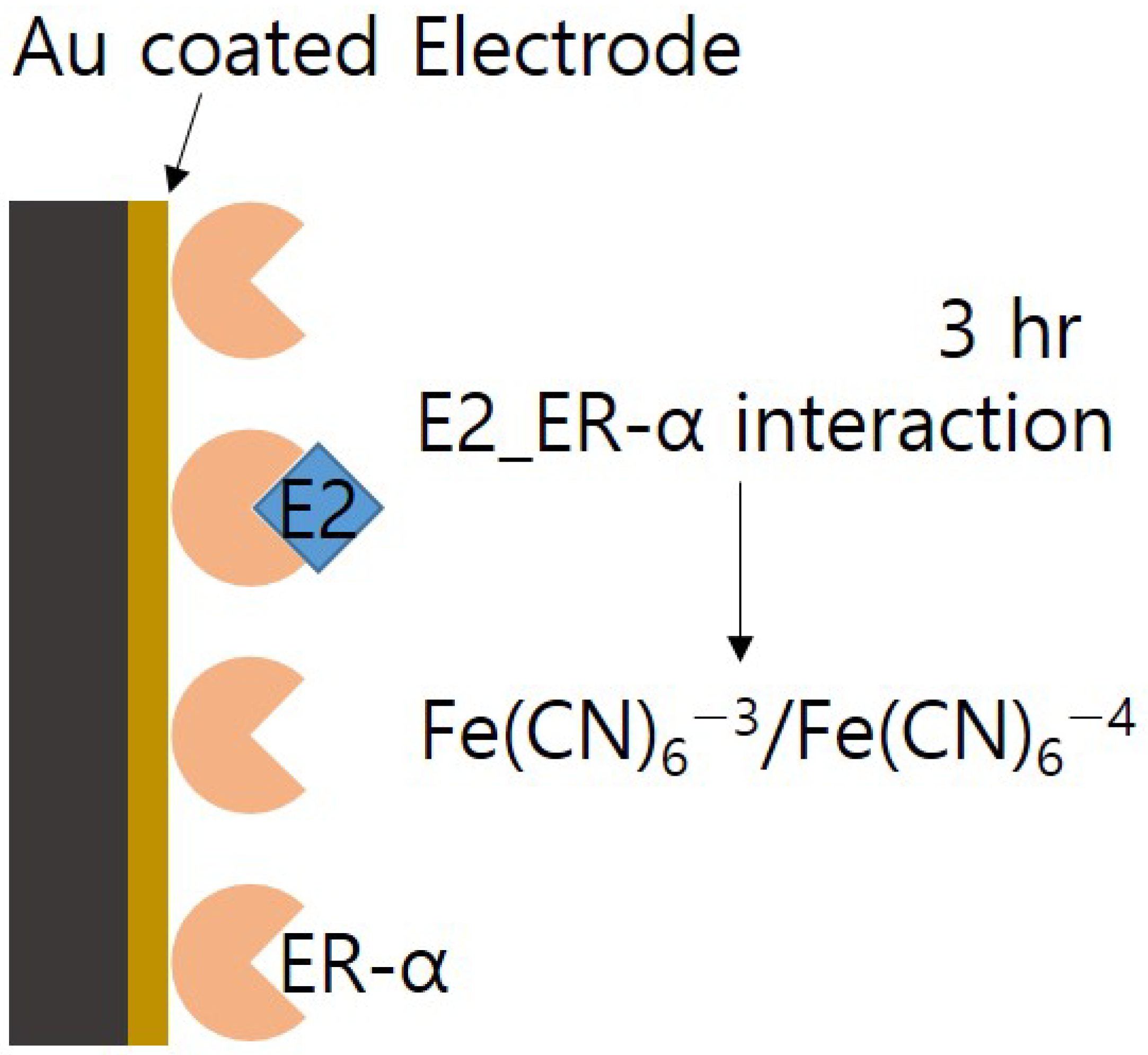
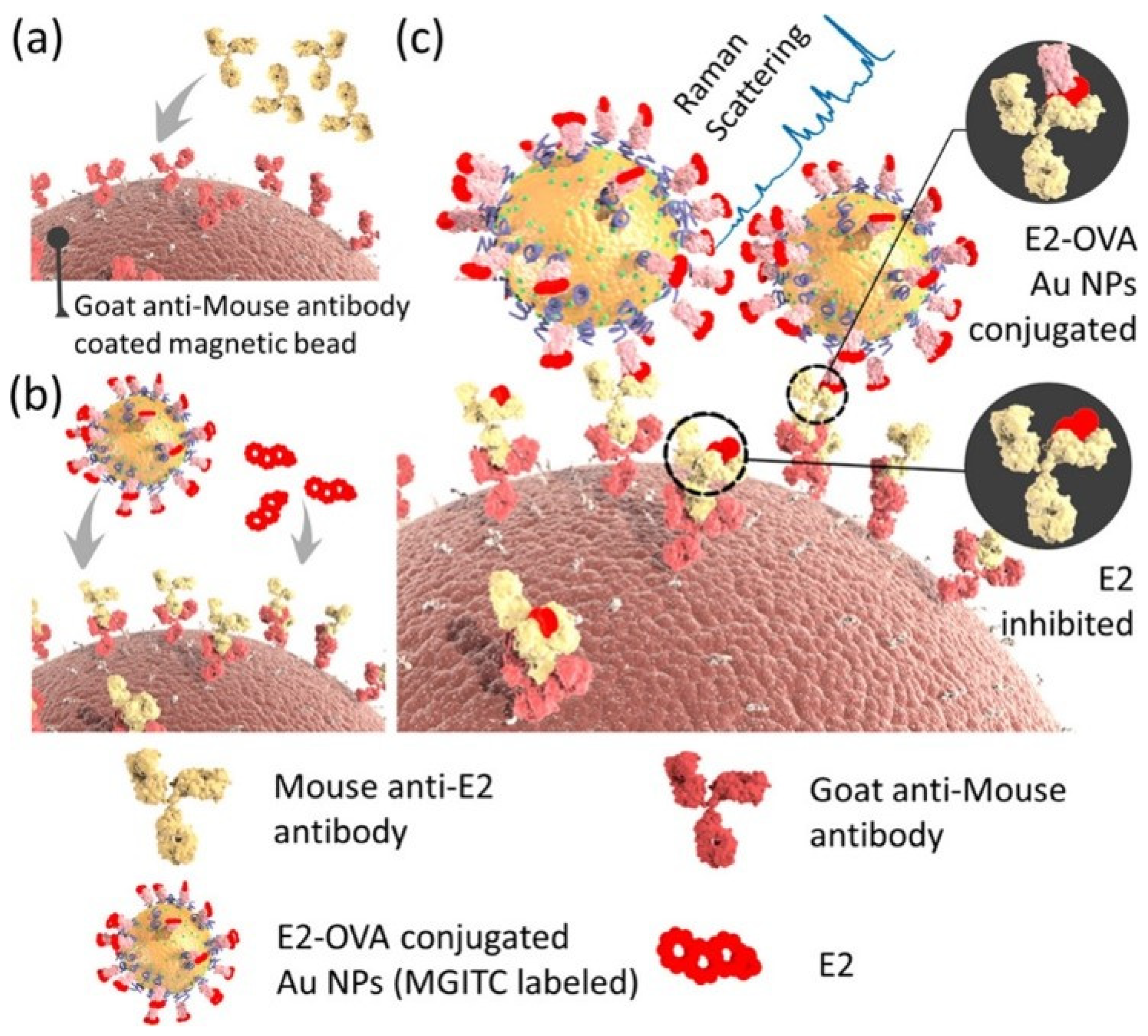
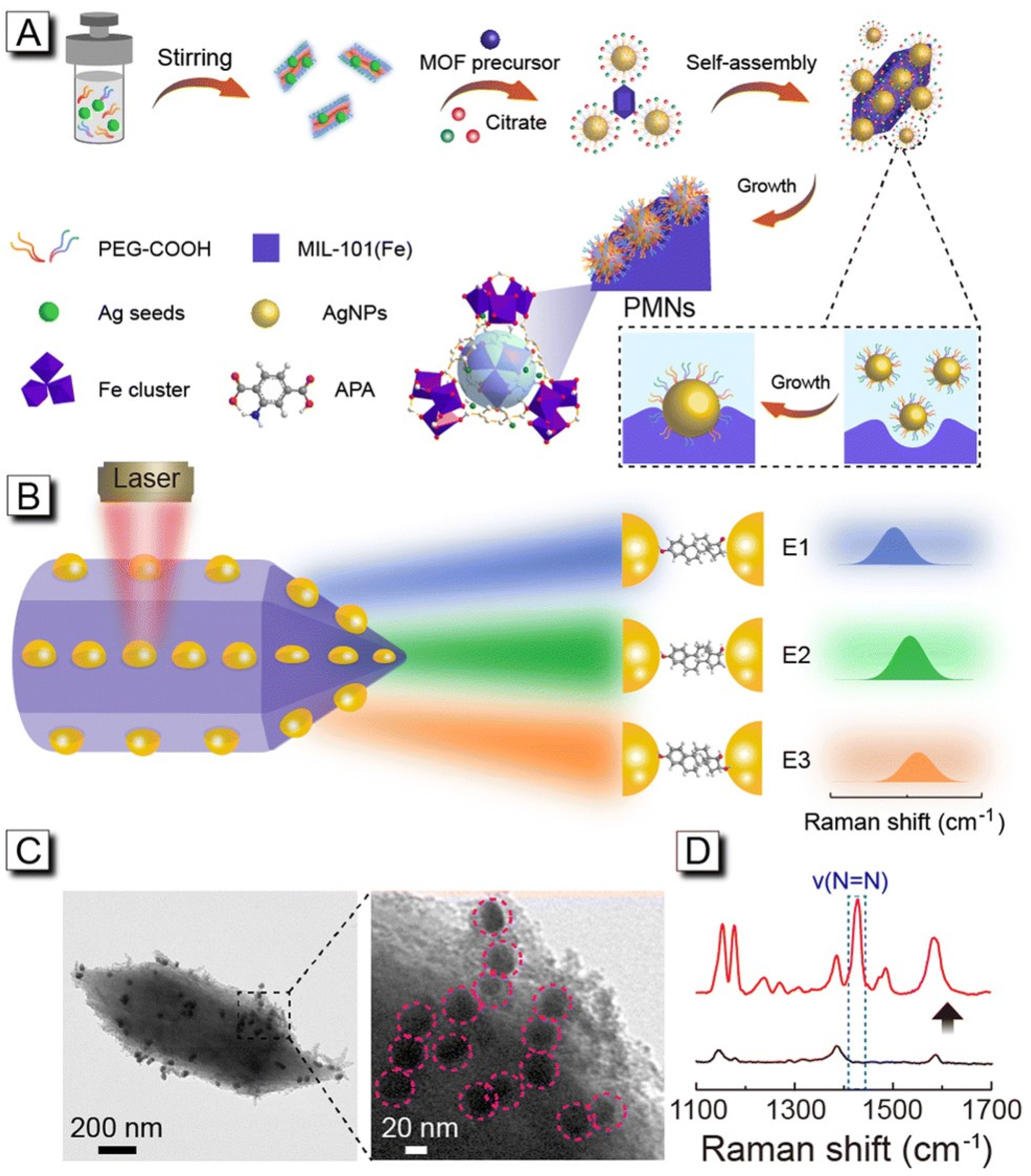
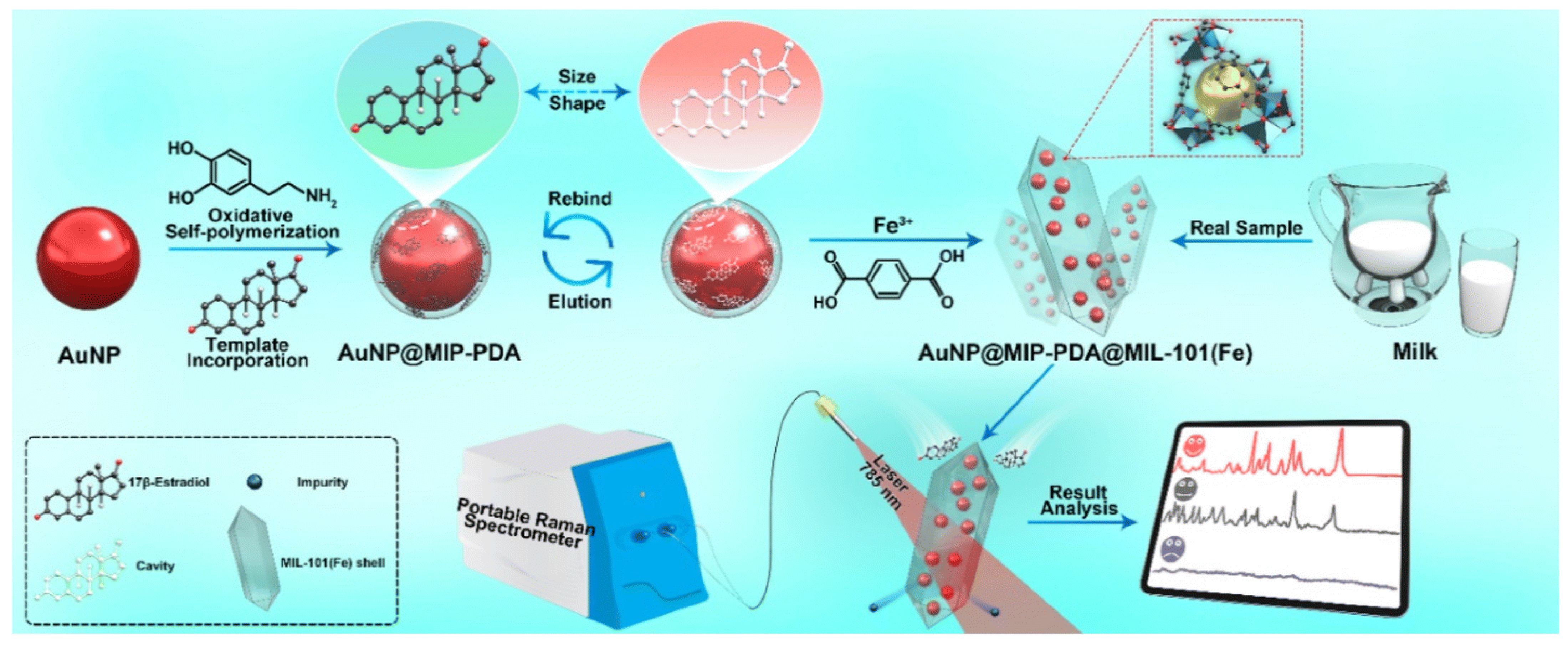
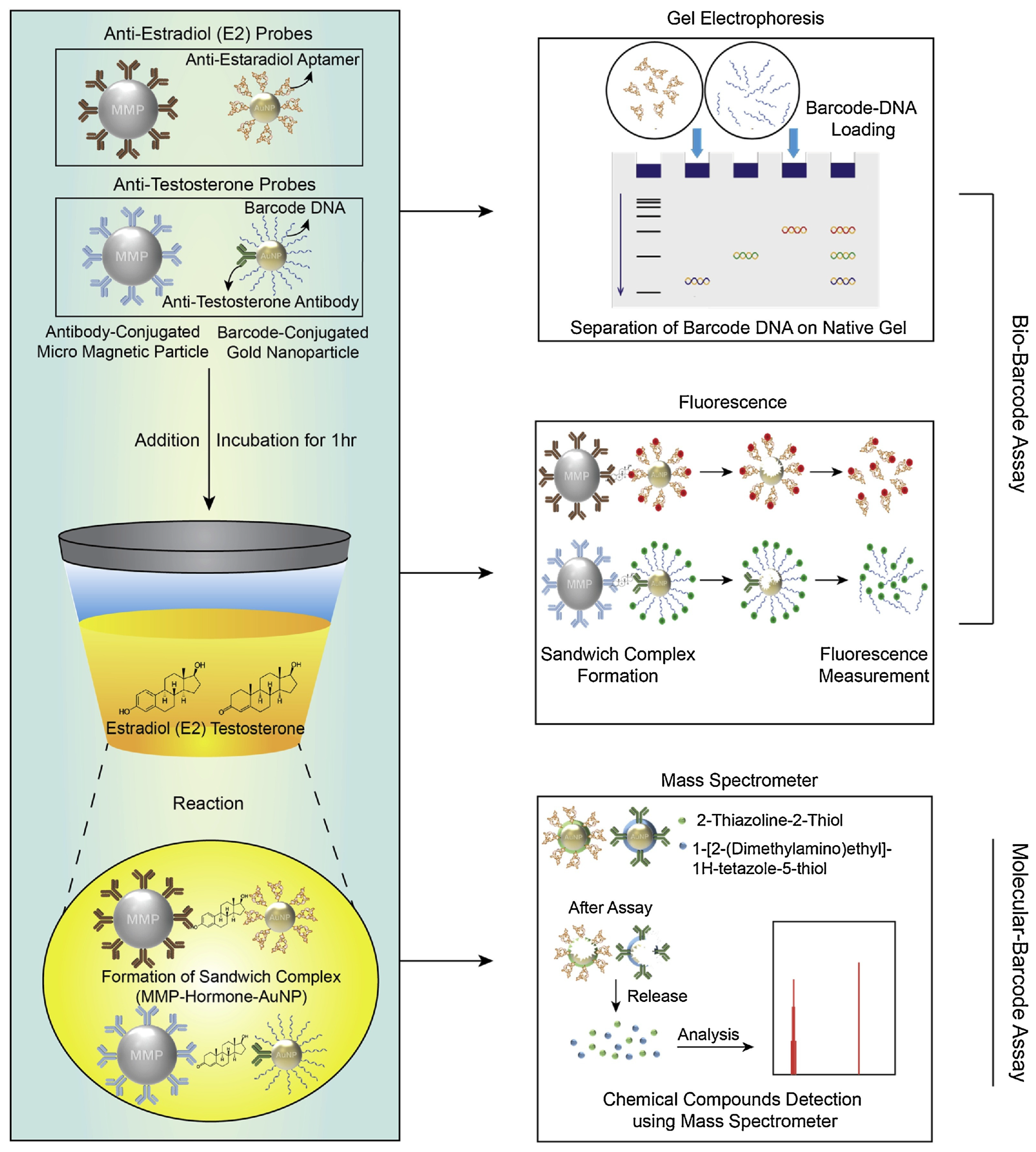
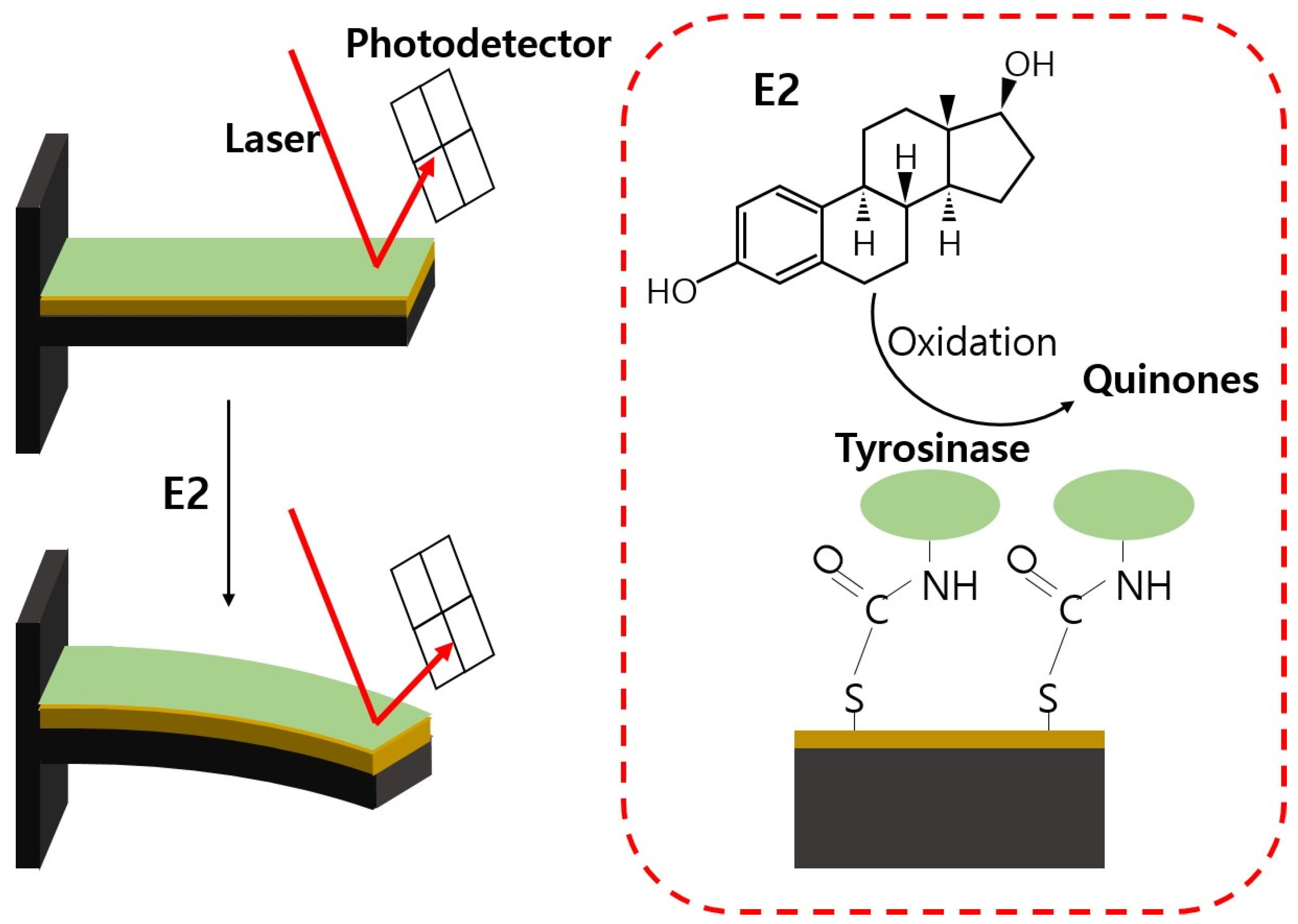
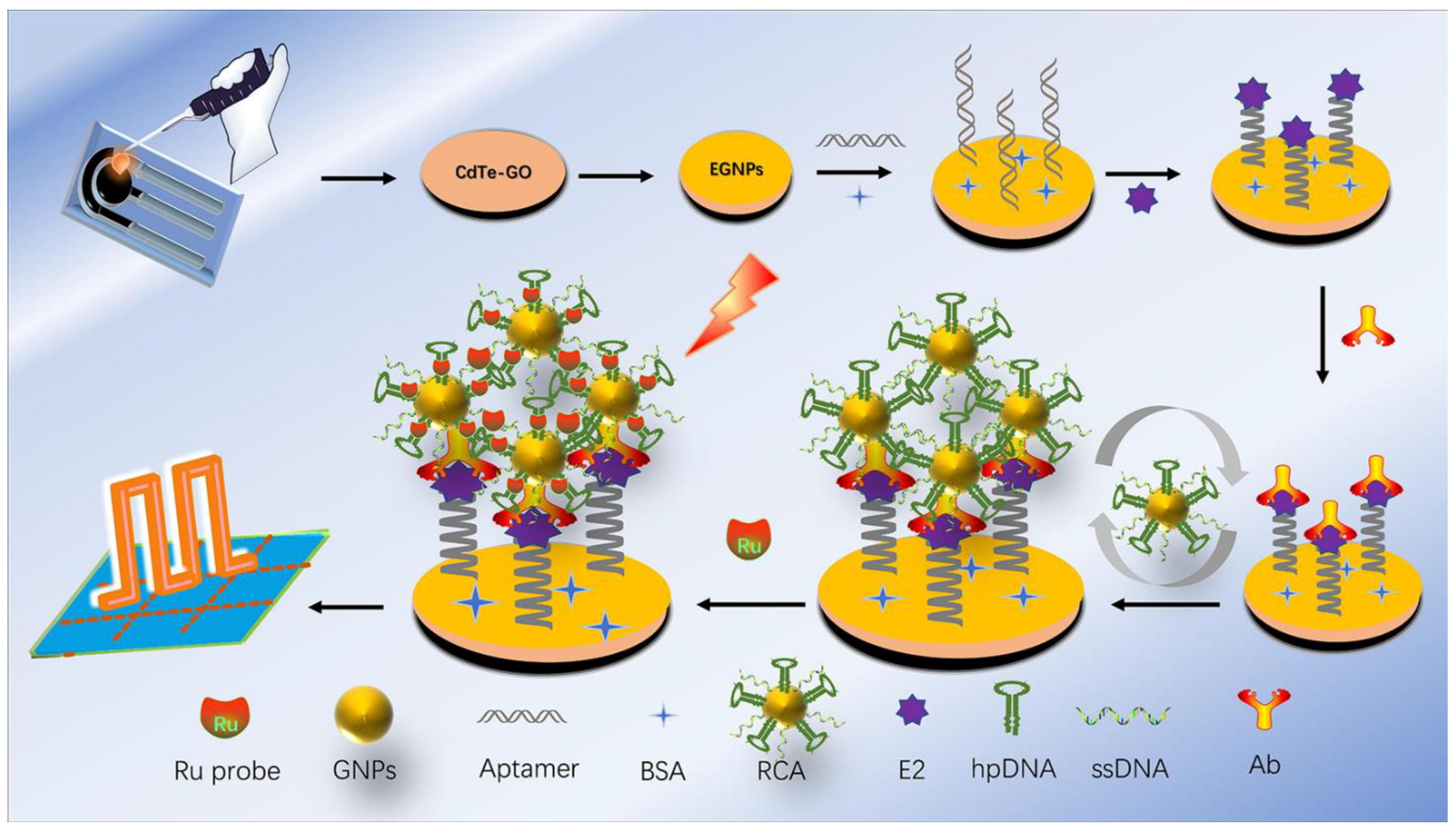
| Tanner Stage | Male | Female | ||
|---|---|---|---|---|
| E2 Levels [pg/mL] | Average Age [Years] | E2 Levels [pg/mL] | Average Age [Years] | |
| 1 | Undetectable–13 | 7.1 | Undetectable–20 | 7.1 |
| 2 | Undetectable–16 | 12.1 | Undetectable–24 | 10.5 |
| 3 | Undetectable–26 | 13.6 | Undetectable–60 | 11.6 |
| 4 | Undetectable–38 | 15.1 | 15–85 | 12.3 |
| 5 | 10–40 | 18 | 15–350 | 14.5 |
| Category | Detection Mode | Signal Amplification | Selectivity | LOD | Sensing Range | Specimen | Recovery | Ref. | |
|---|---|---|---|---|---|---|---|---|---|
| Specific Recognition | Control | ||||||||
| Luminescence | Fluorescence | Multiplying fluorophore | Antibody | E1, E3, EE, E2-17-glucuronide, E2-3-sulfate-17-glucuronide, P4, Androstenedione, DES, p-NP | 6.37 fg/mL | 10.0 fg/mL–1.0 ng/mL | Human urine | 96.5–107.4% | [29] |
| Electrochemiluminescence | PANI@AuNP dual quenching | Antibody | DES, E1, E3, EE, BPA, DDT, TCDD | 3.7 fg/mL | 0.01 pg/mL–200 ng/mL | Lake water, milk | 97.7–104.0% | [30] | |
| Electrochemical | CV, EIS | AuNP-GCE | MIP | E3, DES, BPA, DPA | 1.28 fg/mL | 1.0 fg/mL–100 pg/mL | Milk | 84.7–102.9% | [46] |
| LSV | AuNP-Au electrode | MIP | Testosterone | 1.09 fM | 3.6 fM–3.6 nM | River water | 95.6–103.6% | [47] | |
| DPV | - | Antibody | Testosterone | - | 2.25 pg/mL–2250 pg/mL | Tap water, simulated urine | applicable | [48] | |
| SERS | Raman spectroscopy | MGITC-AuNPs | Antibody | 17α-estradiol, E1, E3, cortisol | 0.65 pg/mL | 0 pg/mL–1000 pg/mL | Clinical serum samples | 95% confidence intervals | [35] |
| Raman spectroscopy | AgNPs@MIL-101(Fe) | Spectral peak difference | Quinestrol, Epimestrol, Nilestriol, Estramustine, Norgestrel, estradiol benzoate, Histidine, estrone acetate, estradiol dipropionate | 4.0 fM | 100 fM–100 nM | Milk, fish, duck meat, wastewater | 86.51–109.8% | [36] | |
| Raman spectroscopy | AuNPs@MIP-PDA@MIL-101(Fe) | MIP | DES, BPA, Chloramphenicol | 0.195 fM | 10 fM–1.0 μM | Milk | 90.56–109.40% | [37] | |
| Miscellaneous | Electrophoresis | Multiplying barcode DNA | Antibody, Aptamer | Testosterone | 1 pg/mL | - | Urine | - | [56] |
| Fluorescence | Multiplying fluorophore | 10 pg/mL | - | - | |||||
| LC/MS | Molecular barcode carried by AuNPs | 10 ag/mL | - | 108.94% | |||||
| AFM voltage response | - | Voltage response difference | Ascorbic acid, Caffein, Thiamine | 0.1 pg/mL | 1 pg/mL–10 ng/mL | Ultrapure, river, tap, mineral water | - | [57] | |
| Photocurrent | DNA amplification (RCA), multiplying fluorophore | Aptamer, Antibody | 2,5-DCP, EE, BPA, E3, Glu, BSA, Urea | 0.01 pM | 0.04 pM–10 pM | Royal jelly, milk powder, urine | 82.58–108.19% | [58] | |
| Optical intensity | - | Aptamer, Antibody | E3, HC, P4, testosterone, E1 | 3.1 pM | 1 pM–250 pM | Human urine | - | [59] | |
Disclaimer/Publisher’s Note: The statements, opinions and data contained in all publications are solely those of the individual author(s) and contributor(s) and not of MDPI and/or the editor(s). MDPI and/or the editor(s) disclaim responsibility for any injury to people or property resulting from any ideas, methods, instructions or products referred to in the content. |
© 2024 by the authors. Licensee MDPI, Basel, Switzerland. This article is an open access article distributed under the terms and conditions of the Creative Commons Attribution (CC BY) license (https://creativecommons.org/licenses/by/4.0/).
Share and Cite
Seok, J.S.; Ju, H. Ultrahigh-Sensitivity Detection of 17β-Estradiol. Chemosensors 2024, 12, 61. https://doi.org/10.3390/chemosensors12040061
Seok JS, Ju H. Ultrahigh-Sensitivity Detection of 17β-Estradiol. Chemosensors. 2024; 12(4):61. https://doi.org/10.3390/chemosensors12040061
Chicago/Turabian StyleSeok, Joo Seon, and Heongkyu Ju. 2024. "Ultrahigh-Sensitivity Detection of 17β-Estradiol" Chemosensors 12, no. 4: 61. https://doi.org/10.3390/chemosensors12040061





